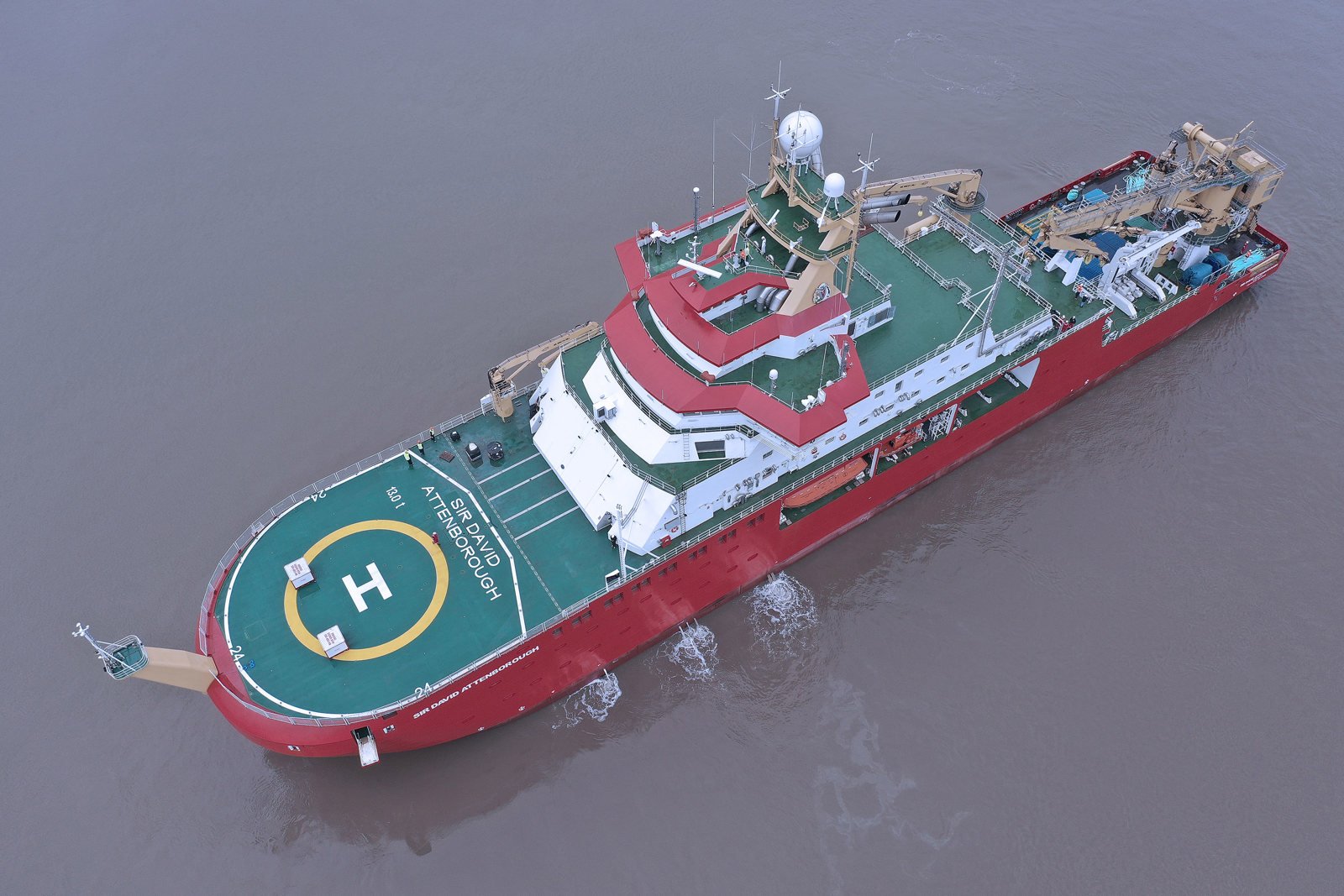
Advancing polar research capabilities
KONGSBERG’s integrated Full Picture solutions are exemplified by the state-of-the-art polar research vessel, the RRS Sir David Attenborough, which will help scientists to address the environmental challenges of the future
-
Text:Marketing & Communication Department
Photo:@ Andreas Wolten @ Glenton Media
-
Craig TaylorSenior Manager PR & Communications
One of the world’s most advanced polar research ships, the RRS Sir David Attenborough, is already impressing the British Antarctic Survey (BAS) during her operational and scientific equipment trials around the Irish Sea.
Commissioned by the Natural Environment Research Council (NERC), built by Cammell Laird of Birkenhead, England, and operated by BAS, this new £200 million (NOK 2.4 billion) investment will transform research in the polar regions.
During the early trials, BAS is testing anchoring, manoeuvring, dynamic positioning, and helideck landing. KONGSBERG designer Erik Leenders, explains: “The vessel has shown good seakeeping during bad weather in the Irish Sea. For the BAS scientists, it will be easier to perform CTD operations and, of course, living on board will be more comfortable. They also have much better space to handle science equipment.”
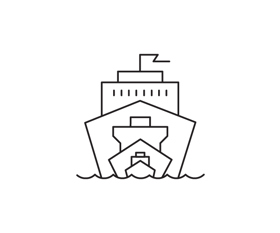
“This magnificent ship will take UK scientists deep into the heart of the ice-covered polar seas. With state-of-the-art technology they will investigate the dramatic changes in the polar oceans. As we seek to find answers to the current climate crisis, this ship will take us to the ends of the Earth to seek answers and to help us understand our future world.” Professor Dame Jane Francis Director British Antarctic Survey
Next year the ship will undertake ice trials in the Baltic and Arctic and, in November 2021, it will make its maiden voyage to Antarctica.
KONGSBERG’s integrated systems are central to the vessel’s position as one of the most advanced research vessels ever built. The vessel’s sophisticated, cost-effective solutions include an energy management system, cutting-edge sensors and remotely-operated robotic technologies which come under the company’s Full Picture scope of delivery.
BAS’s missions will take RRS Sir David Attenborough to the most remote areas with the most extreme conditions. However, KONGSBERG technology will enable safe navigation and control, as well as capture of the data that scientists need to address the environmental challenges we will face in the future.
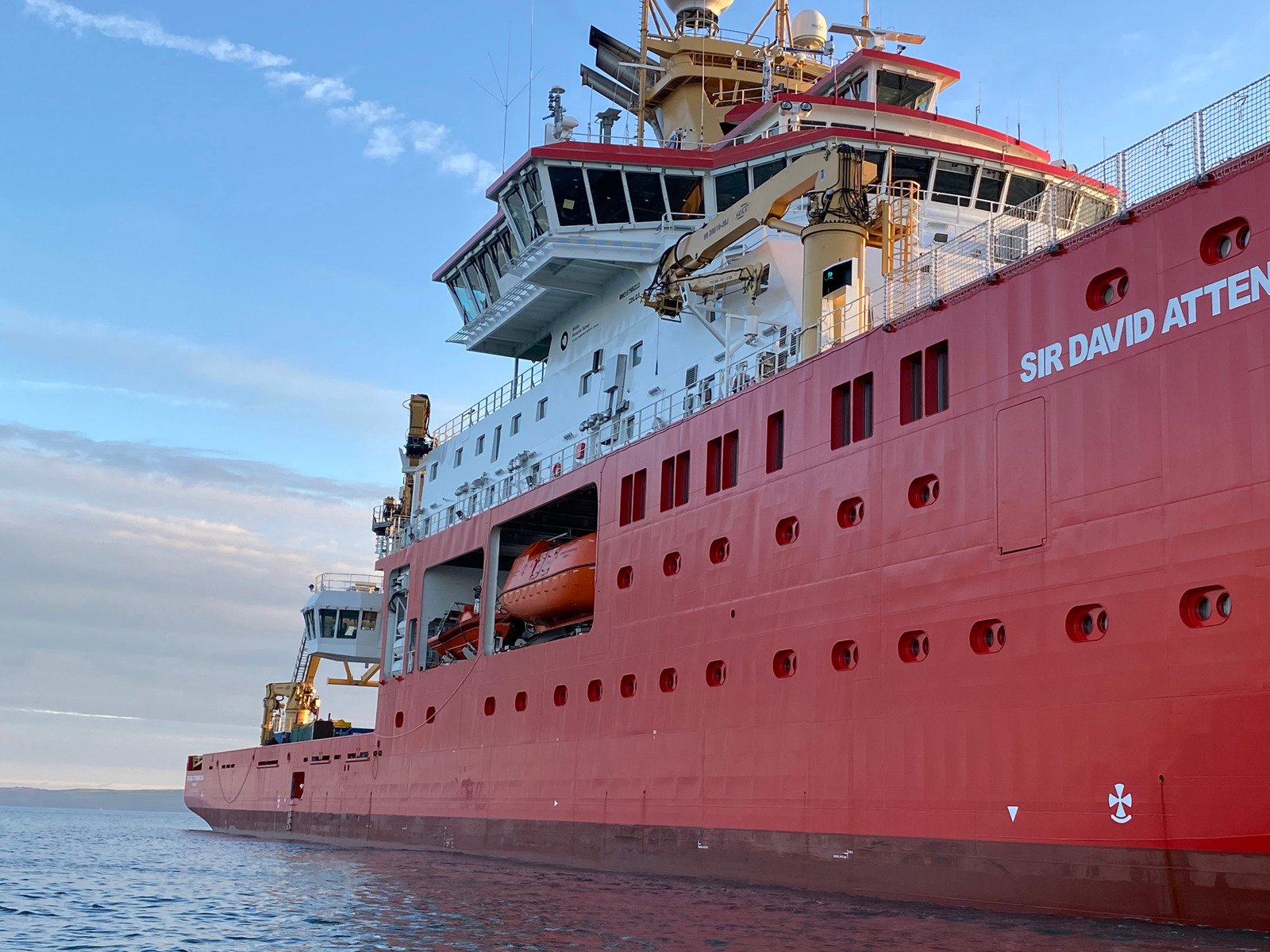
The Full Picture for research vessels
The integration includes the ship design and all its solutions, ranging from propulsion systems, engines, deck machinery, automation, bridge, control systems, energy, sensors and robotics. And the innovative KONGSBERG design team has been successful in developing a new generation of vessels with a very low underwater noise signature.
To effectively monitor the oceans and have minimal environmental impact, the Sir David Attenborough has to comply with the strictest underwater radiated noise requirements. All of the equipment systems are integrated in the vessel to get the best possible measurement results with as little as possible disturbance of water and air flows. The team also needed to ensure the propulsion system can deal with large pieces of ice. The hull also has an extreme requirement for smoothness and welded connections to avoid vortices. The whole ship has to be working together by design and, when you start going into ice, there are a lot more things to take into account so that the vessel can manoeuvre silently and safely.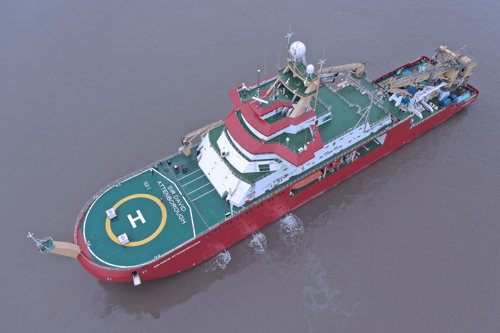
An added challenge is that research vessels can be away for months at a time and carry a lot of high cost equipment. There are a significant number of features to fit into the hull. This ship has a helipad and hangar for two helicopters, cranes and onboard labs, and an enhanced ability to deploy subs and other ocean-survey and sampling equipment. The hull is also fitted with a number of scientific transducers and sensors which need bubble-free zones. Specially developed bow and bottom shapes were designed by the team to lead bubbles away from the sensors.
The vessel has a diesel-electric propulsion system powered by four Bergen B33:45 engines, 4.5m CP propellers in a Promas installation driven by two motors on each shaft, and an accurate dynamic positioning system to keep the ship in place during instrument deployment using bow and aft thrusters. There are KONGSBERG winches allowing for subsea surveys or to collect seabed and water samples at depths down to 9,000m.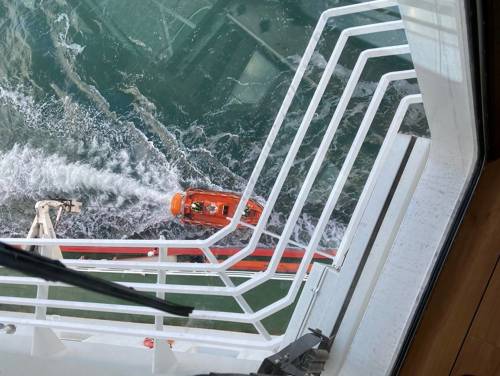
To safely launch a number of tools in extreme conditions, the vessel has a 4.2m wide scientific ‘moon pool’ through the centre of the ship, equipped with a KONGSBERG-designed moon pool handling unit. Controlled from the science hangar on board, it guides autonomous underwater vehicles and other scientific equipment through the moon pool before releasing them under the vessel.
The commencement of sea trials is a major milestone in the four-year build programme. The trials are a critical and final part of the programme as they allow its engineers and the ship’s crew to put the vessel through its paces at sea.
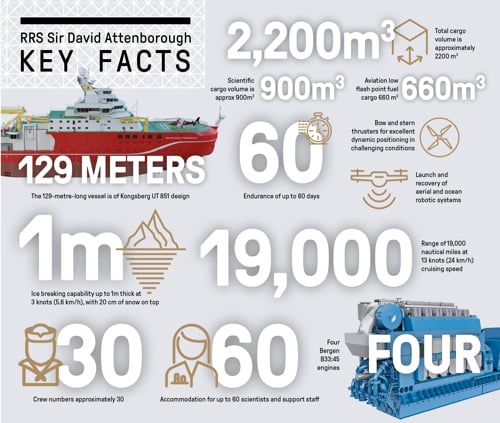
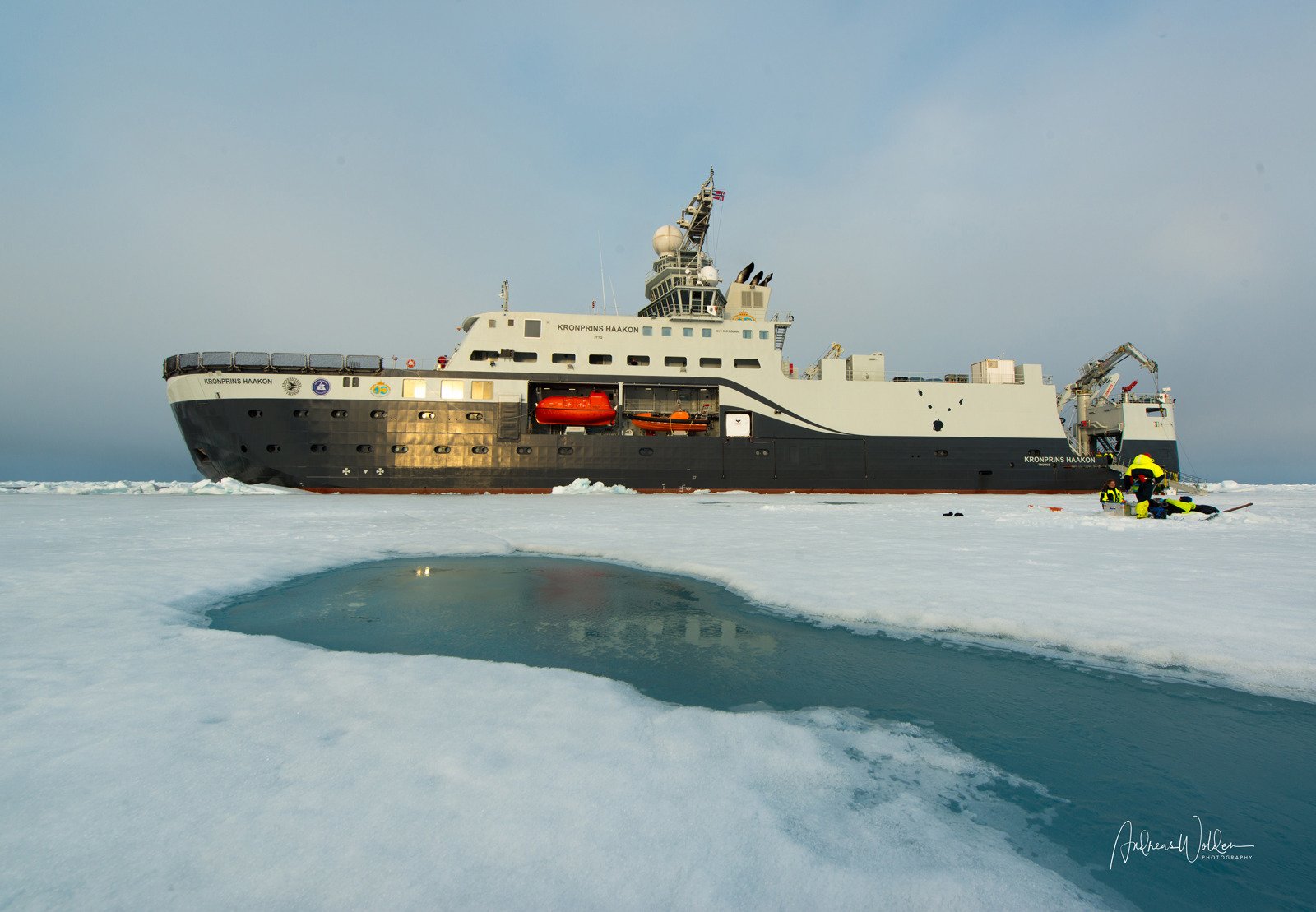
A next generation research platform
It will act as a central hub for a range of data-gathering remote instruments and onboard environmental monitoring systems, including both marine and airborne robots.
The RRS Sir David Attenborough has a 'moon pool' which allows instruments to be deployed and collect data through an opening in the hull. In addition, equipment can be deployed over the sides and the stern. It can deploy and recover large remotely operated and autonomous marine vehicles and can carry helicopters.
With greater fuel efficiency and its ability to deploy remotely operated and robotic technologies, the ship is expected to reduce the environmental impact of ship-borne science and save in operating costs over its 25-year lifespan.
“This kind of vessel is a perfect match for KONGSBERG and the customer will benefit from the integrated Full Picture solutions provided which maximise the vessel’s performance.” Einar Vegsund Director of Ship Design Solutions KONGSBERG
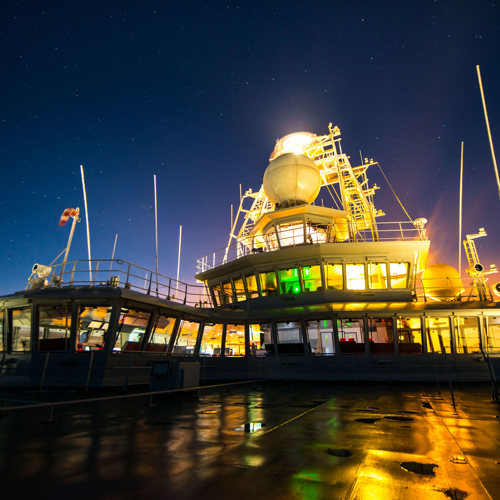
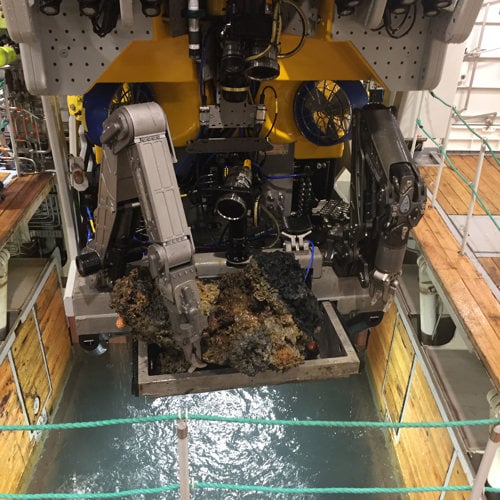
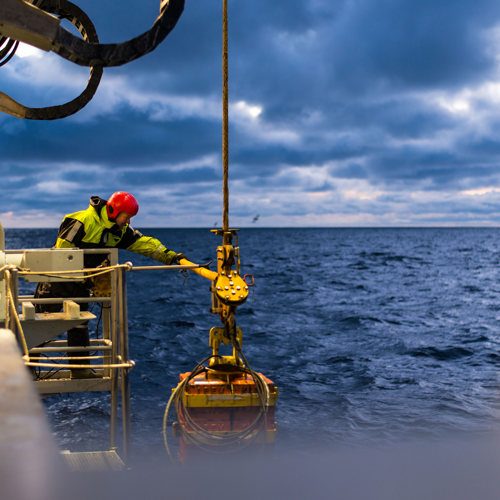
The Institute says RV Kronprins Haakon proved to be a stable and solid platform with excellent handling characteristics in both ice and open water, and the vessel’s state-of-the-art instrumentation opens up the possibility of marine ecosystem surveys in remote polar marine areas which it had not been able to study previously.
Delivered in 2018, the KONGSBERG-designed polar research vessel was part of the innovation journey for the design team behind the RRS Sir David Attenborough.
The journey to achieving one of the world’s most silent hulls on the Sir David Attenborough started many years ago.
The Norwegian Polar Institute sought creativity in the team’s design for the RV Kronprins Haakon and KONGSBERG experts used their skills to deliver a solution for a technology-intensive vessel that can operate in the harshest environments as quietly as possible. The team worked with the owner for ten years side-by-side to meet all of the client’s specific requirements with the integrated Full Picture approach.
Kronprins Haakon’s top requirement was ice breaking, which requires a relatively flat bow that breaks the ice and pushes it down and to the sides, creating a safe, clear path for the ship. However, its capability as a first-class research vessel is equally important. Air bubbles sweep down and noise signatures are even more challenging for ice-going vessels, since the hull and propulsion systems must also be designed to meet the extreme environmental conditions found in polar areas.
The RV Kronprins Haakon features a complete KONGSBERG hydroacoustic systems package, a wide range of Simrad scientific research systems and an extensive bridge system, to meet the vessel’s complex navigation needs. It also has a moon pool, a remote-controlled submarine that can go down to a depth of 6,000 metres, a helicopter deck, seismic and trawling equipment, as well as being able to send out weather balloons that can establish profiles of the atmosphere.
With 15 laboratories, and with some of the most comprehensive equipment packages supplied to any research vessel, the ship will monitor the environmental and climate conditions in marine areas in the Arctic and Antarctic for years to come.